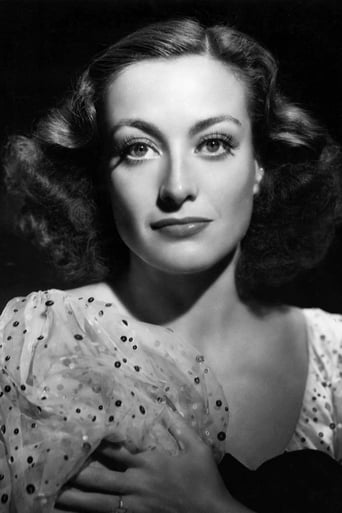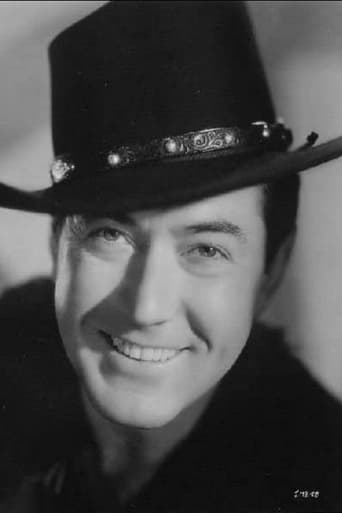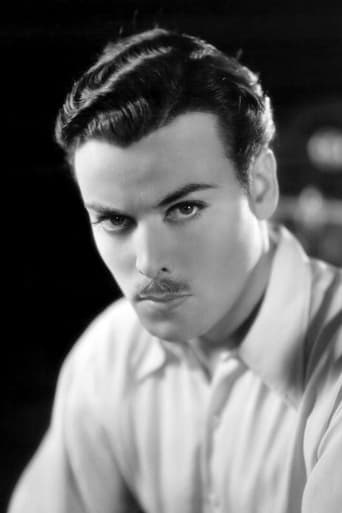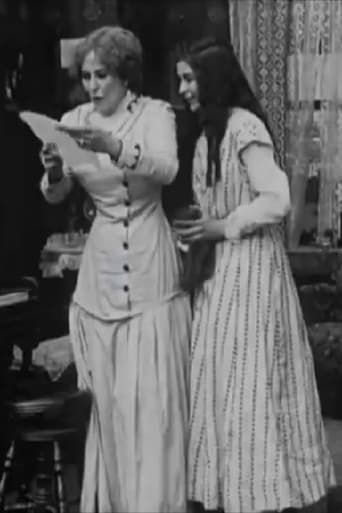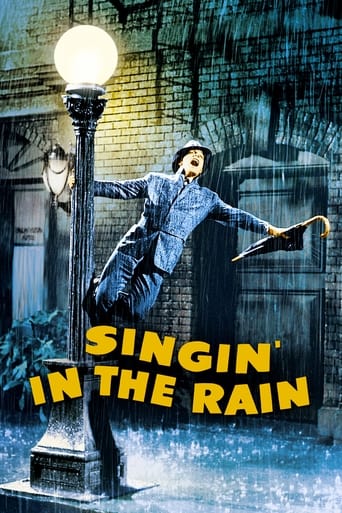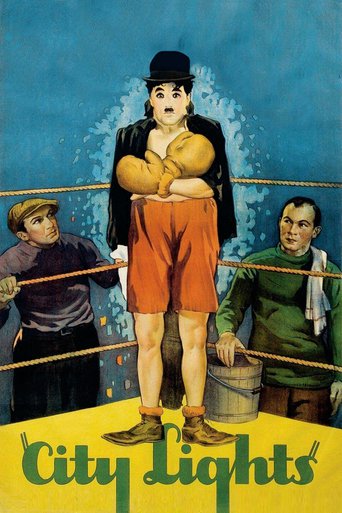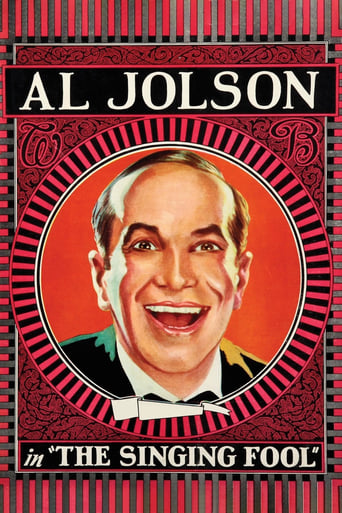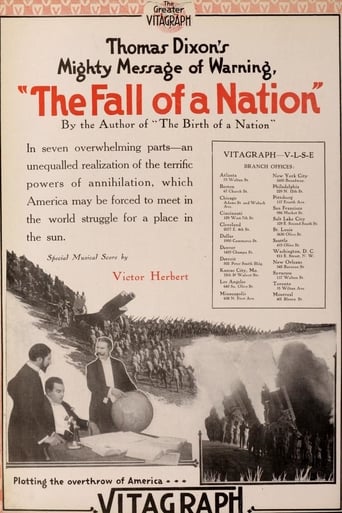
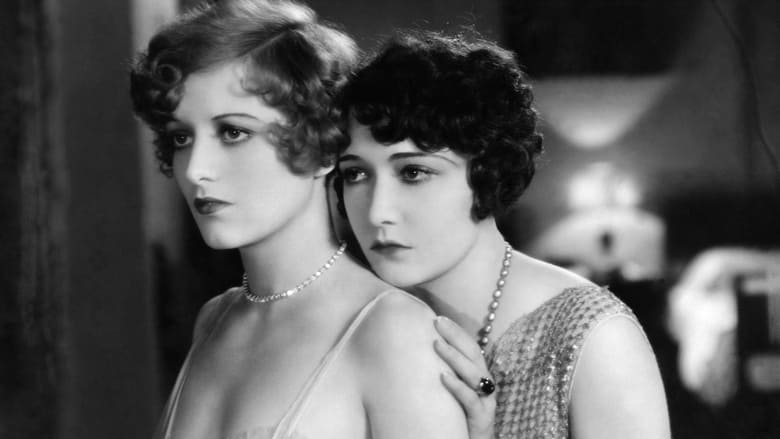
Our Dancing Daughters (1928)
A flapper sets her hat for a man with a hard-drinking wife.
Watch Trailer
Cast
Similar titles

Reviews
Wow! Such a good movie.
To me, this movie is perfection.
This story has more twists and turns than a second-rate soap opera.
One of the worst ways to make a cult movie is to set out to make a cult movie.
Copyright 1 September 1928 by William Randolph Hearst's Cosmopolitan Productions. Released through Metro-Goldwyn-Mayer. New York opening at the Capitol: 7 October 1928. U.S. release: 1 September 1928. 9 reels. 7,652 feet. 85 minutes.SYNOPSIS: Diana Medford, a vivacious, high-spirited girl, falls in love with a young, handsome millionaire. Unfortunately, she has competition. COMMENT: Oddly, this one is a triumph for Anita Page. She just creams the rest of the cast. True, Joan Crawford is absolutely delightful as the dancing Diana, but acting-wise she has little to do other than look vampish or soulful. Miss Page has by far the showiest role and she makes the most of it. Wise girl! She had another great opportunity to show what she was made of in Broadway Melody, but then she fell foul of Hollywood politics and was pushed aside. Dorothy Sebastian also registers strongly here as the appealing Beatrice, but the men are a complete wash-out. The worst are surly Asther, overly exuberant Nugent and two-expressions Brown (smile on, smile off). Production values, fortunately, are agreeably lavish. As with Our Blushing Brides, the DVD is currently only available from Warner. A silent film, the movie was originally issued with a continuous music sound track and occasional sound effects.
Art Director Cedric Gibbons truly out did himself on this sumptuous set! Wow! Crawford and the gang spill from one stunning Art-Deco room to another. From the wallpaper and murals, to furniture and fittings, this movie is a riot of cool sleek decor. The screwball inter-title lingo alone is worth a gander. The films plot is ultra simple but the picture is worth investing a little time into, especially as it portrays an era when young people first began asserting themselves through fashion. I'll bet not many viewers know where the moniker "FLAPPER" comes from? Well. back in the 1920's, the VERY FIRST fashion "craze" began to spread across the youth of America and soon young ladies actually enjoyed being considered overtly wild, and loved vigorously dancing to the hip new sounds of jumping jazz music. They sported stylish short bobbed hair cuts and donned their brothers galoshes. If you're unfamiliar with galoshes, ..they are rubberized winter boots that usually fit OVER the shoe with a zipper or buckles in front to hold them in place. Well these gals decided to wear their brothers galoshes DELIBERATELY UNZIPPED/ or UNBUCKLED so that when doing the Charleston, (and other aberrant dance steps), their boots would FLAP around! They also wore dropped waist dresses to appear more straight up and down like a male and even bound their breasts to be as flat chested as possible! The whole idea was to shock society and the girls loved scandalizing their parents by trying to look like boys! Must have seemed OUTRAGEOUS at the time given that the Edwardian period was still clinging to the decade? Of course the boys egged on this behaviour and swooned over this "new" girl who seemed far more approachable and therefore touchable! Not surprising. Anyway the fad of flapping boots rather quickly faded away but the "FLAPPER" designation stuck. Our Dancing Daughters is a somewhat forced time capsule of the era but Joan Crawford gives a frantic flapper film performance for the ages.
The Roaring Twenties has come down to us in history as an era of good times and continual partying until that stock market crashed and one could no longer afford to party. Joan Crawford got her first taste of first billing and stardom with Our Dancing Daughter where she does the ultimate Charleston of the Twenties.Crawford at first glance is one wild child, but it's just a pose. Down deep she knows when to put on the brakes. She's got two friends she parties with, Dorothy Sebastian who's reticent now, but at one time was the wildest child of all. Sebastian knows that those loose morals of the past have irreparably damaged her reputation. She'd like to really settle down, but whomever she dates is expecting only one thing.Then there's Anita Page who comes off to her friends as prim and proper, but is really the wildest child of all. She's got a nice image, but when she parties, she really parties.Both are after young Johnny Mack Brown who is playing what he was in real life, a recently graduated All American halfback from the University of Alabama. He likes them both and wants a wife to settle down with, but he's not a good judge of character. In fact he's a bit of a dope. He rejects Crawford and marries Page and regrets it soon enough.MGM was stepping into the age of sound ever so cautiously. Sound effects are heard and several songs of the era are interpolated into a soundtrack either sung or played instrumentally. All these players would be talking soon enough on screen.Our Dancing Daughters is a must for Joan Crawford fans and it's a great look at the culture of the Twenties, the Flapper Culture.
OUR DANCING DAUGHTERS (Metro-Goldwyn-Mayer, 1928), directed by Harry Beaumont, is memorable today mainly because it made an overnight star of an MGM contractee named Joan Crawford, a resident performer at MGM since 1925. In spite of Crawford's recognition with this particular silent melodrama focusing on three happy-go-lucky party girls out for a wild time finding men, Dorothy Sebastian and Anita Page being the other two dames in question, it is Page, the third party of the trio, who practically gets the most attention due to her immorality and selfishness in her character. It is this, and Page's performance in MGM's first talkie, "The Broadway Melody" (1929) that will be most remembered by film historians for years to come, so long as this, and other films like these, continue to exist on television and appreciated by a new generation of classic movie lovers. The story opens with three youthful girls getting themselves ready for another Saturday night on the town: Beatrice (Dorothy Sebastian), a simple-minded girl; Ann (Anita Page), a cute, peppy blonde who's not only immoral and immature, but an out-and-out gold digger; and Diana Bedford (Joan Crawford), a fun-loving socialite noted for her love for fast cars, dancing and wild parties, trying to live her life according to her parental upbringing, on high moral principals. At the party, Diana amuses her friends by stripping off her dress and dancing step-ins. Later, she comes upon Ben Blaine (Johnny Mack Brown), a handsome young man and an heir to millions. Diana becomes very much interested in him, but Ann decides to step in herself, giving Ben the impression that she is pure and innocent. She tricks Ben into marriage, which leaves Ben blind of the fact to what kind of girl Ann really is. As Beatrice finds a partner in marriage with Norman (Nils Asther), Diana remains single, keeping only to herself until sometime later, the unhappily married Ben comes back into her life again, causing friction between Diana and Ann.As it appears, OUR DANCING DAUGHTERS is a routinely made silent drama that rises above similar stories made during the bygone roaring twenties era. Watching Joan Crawford as a "jazz age" baby in the vogue of Paramount's own Clara Bow, is interesting to see, but unlike Bow, who retired from the screen in 1933, Crawford adapted to the changing of times, presenting herself in costumes and headdress accordingly to the new era, and improving with each passing decade her skillfulness as an actress, which is why she remained in the public eye of motion pictures until 1970. For quite some time, OUR DANCING DAUGHTERS became the only known silent movie starring Crawford from the silent era to circulate either in revival movie houses or on commercial television before becoming part of cable television decades later, namely Turner Classic Movies. Interestingly, as in many silent movies of the late twenties, OUR DANCING DAUGHTERS is currently available two ways, in either 97 minutes (video cassette) or a shorter version (TCM) at 85 minutes. The video presentation from the late 1980s, labeled on its storage box "including original musical score," is, in actuality, consisting of orchestral score used for the public television 13-week film series 50th anniversary to MGM, MOVIES GREAT MOVIES (1973), where OUR DANCING DAUGHTERS premiered in on WNET, Channel 13, in New York City, October 19, 1973, as hosted by Richard Schickel. The 85 minute version shown on Turner Classic Movies is the one with the original 1928 soundtrack consisting of crowd noises, sound effects and off-screen singing by an unknown vocalist crooning to "I Love You Then as I Love You Now." A sharp ear will also hear Diana's name being yelled out amongst the crowd. Watching the movie currently available in both these versions with different underscoring is quite acceptable, but it's the original 1928 soundtrack that gives more of the feel, capturing the mood from that jazz age.Also seen in the supporting cast are Eddie Nugent, Dorothy Cumming, Huntley Gordon, Evelyn Hall and Sam DeGrasse. Fans of Universal's SHERLOCK HOLMES film series of the 1940s starring Basil Rathbone and Nigel Bruce will take notice that the character actress who played their landlady, Mrs. Hudson, can be spotted as one of the three scrub women at the bottom of the stairs in one of the more memorable highlights involving the drunken Ann (Anita Page).The success of OUR DANCING DAUGHTERS paved the way to sequels in name only, all featuring Crawford and Page: the silent OUR MODERN MAIDENS (1929) with Douglas Fairbanks Jr; and the early talkie, OUR BLUSHING BRIDES (1930) with Robert Montgomery and Dorothy Sebastian. With all three being shown occasionally on TCM, the original, which started it all, remains the best known of the trio. (***)
